CAA News Today
CWA Picks February-March 2021
posted by Allison Walters — Mar 12, 2021
February and March Picks from the Committee on Women in the Arts celebrate a selection of events, exhibitions, and calls for work and participation featuring feminist and womxn artists and address issues about social justice and ethics in intersectional and transnational perspectives.
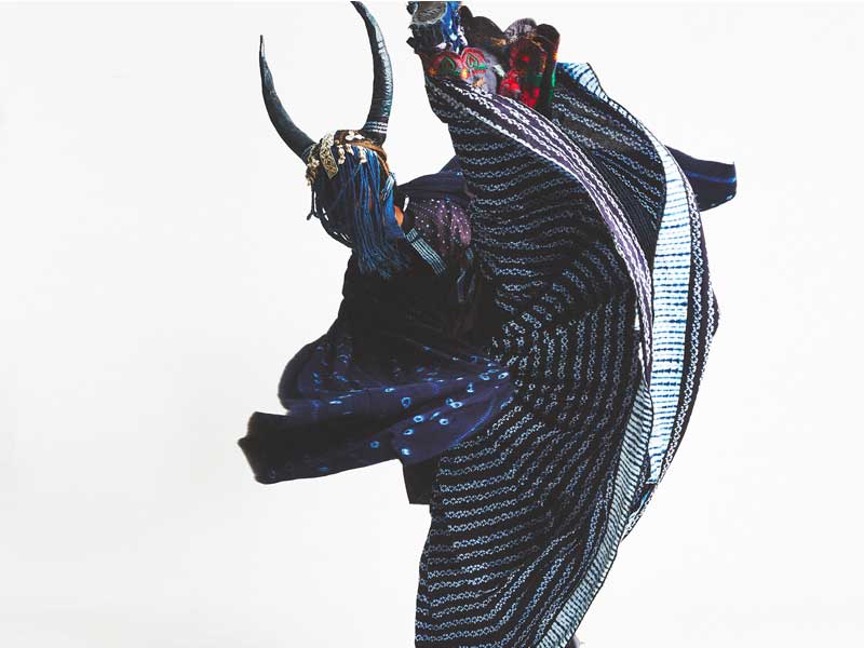
Dancer Christ Walker in his portrayal of Laura Anderson Barbata’s Rolling Calf in Intervention: Indigo, part of the exhibition Laura Anderson Barbata: Transcommunality, Newcomb Art Museum of Tulane University. Photo by Rene Cervantes.
Laura Anderson Barbata: Transcommunality
January 16–October 2, 2021
Newcomb Art Museum of Tulane University, New Orleans, LA
Laura Anderson Barbata’s (b. 1958) socially engaged, activist, and environmentally sustainable practice is on view in a dynamic exhibition curated by Laura Blereau at the Newcomb Art Museum. Transcommunality enriches bold concepts of global collaboration and cultural exchange, civil and indigenous rights, and human connection and belonging across geographical borders. Anderson Barbata was born in Mexico City, Mexico, and works between Mexico and the United States. This exhibition unites five projects and series across the Americas, showcasing a wide swath of media and community-based approaches such as street theater, arts education, printmaking and book making, textiles, wearable sculpture, photographs, and stilt dancing. Among the works on display are paper making techniques and workshops utilizing Ye’Kuana Amazon wood printing blocks for body printing and printmaking in Venezuela (Amazonian moriche palm fiber); fabric costumes worn by stilt dancers and carnival performers, including Moko Jumbies in Trinidad and Tobago and the Brooklyn Jumbies of New York, West Africa, and the Caribbean, as well as the significant artisan culture of los Zancudos de Zaachila from Oaxaca, Mexico. Transcommunality also documents Anderson Barbata’s extraordinary intervention and efforts to repatriate the body of Julia Pastrana, a nineteenth-century Mexican woman grotesquely exploited for her physical disabilities. As Anderson Barbata avers, reciprocity fundamentally underscores her artistic work and approach.
Mildred Thompson: Throughlines, Assemblages and Works on Paper from the 1960s to the 1990s
February 18–March 27, 2021
Galerie LeLong & Co., New York
A selected survey of Mildred Thompson’s (1936–2003) mature practice into the 1990s, Throughlines explores the African American artist’s dynamic experimentation in found and manipulated wood, free-standing assemblages and sculptures, and dynamic utilisation of abstraction in works on paper and prints.
February 6–March 9, 2021
Leslie–Lohman Museum of Art, New York
The first comprehensive retrospective on Chicana artist Laura Aguilar (1959–2018), Show and Tell presents more than 70 photographs and videos spanning three decades. The development of Aguilar’s performative, feminist, and queer genres encompass candid portrayals of LGBTQ+ and Latinx communities; nude self-portraits serve as powerful investigations on the complicated colonial histories of racial and sexual injustice and personal expressions on vulnerability and beauty.
January 21–May 8, 2021
Ulrich Museum of Art, Wichita, Kansas
This exhibition explores Renée Stout’s (b. 1958) print portfolio from 2012 titled Ghosts, currently in the collection of the Ulrich Museum of Art, and in dialogue with six Yoruba objects from present-day Nigeria in the Wichita State University’s Lowell D. Homes Museum of Anthropology. Stout’s seminal artistic research into the histories of African American heritage and the African diaspora are demonstrated in Ghosts, haunting monotypes that touch upon syncretic belief systems and visual narratives of Haitian Voudou and American Voodoo and Hoodoo, especially as these religions are expressed in marginalized Black communities.
February 25–April 17, 2021
Nara Roesler, New York
The inaugural solo exhibition in the US of Brazilian multidisciplinary artist Amelia Toledo (1926–2017), the artist is best known for her constructive investigations that traverse the material boundaries of the natural world and landscape, and offer new definitions of ecological concretism through the technical and physical examination of shells, stones, and wood. Toledo’s later Penetrables, on view, explore inhabitable space through hanging color fields as raw canvas and organic pigments. Although associated in her career with many of the foremost postwar neo-concrete Brazilian artists, including Mira Schendel, Tomie Ohtake, Hélio Oiticica, and Lygia Pape, Toledo maintained a separate identity. On her hands-on and observational approach to her practice, Toledo offered: “It’s not even just a question of difference processes; each material constructs itself, proposes itself in the form of certain consequences.”
Les Femmes Folles Presents: Feminists Connect
Launching March 2021
This curated online exhibition includes work by 40 international artists, artist statement and bios received in response to a call inviting participants to reflect on the theme Feminist Connect and the possibilities for the arts and feminist enquiry. Driven by feminist ethics of care, the curators of this online art exhibit, Sally Brown and Leslie C. Sotomayor, became actively invested in selecting artworks that engage through lived experiences and embodiments into conversations on larger social issues such as love, grief or invisibility. The curatorial process was dialogic and centered on co-creation of knowledge with care.
The Vagina Museum’s ‘Cliterature’ book club – Feminism, Interrupted
Thursday 22nd April 2021, 7:00 PM – 8:30 PM UK Time
Zoom
Cliterature, the Vagina Museum’s book club, welcomes everyone to engage in readings and discussions of fiction, non-fiction, essays and poetry. The April event focuses on a non-fiction book Feminism, Interrupted: Disrupting Power by Lola Olufemi, which calls to reclaim feminism from its neoliberal appropriations as a radical tool for fighting back against structural violence and injustices, including, among others, reproductive justice, transmisogyny and gendered Islamophobia.
February 1st – June 6th 2021
Zachęta – National Gallery of Art, Poland
Rhizopolis, a set design and an artistic installation, is not a phantasy. It welcomes us to a world of hypothetical future after an ecological catastrophe that is inevitable in the Antropocene. Imagining an underground city underneath a forest inhabited by refugees from the surface of Earth, Rajkowska calls into question our faith in continuous progress and civilizational development and expansion. In the context of the pandemic, Rhizopolis offers an opportunity to revisit survival scenarios and techniques and invites us to consider radical dependence and interconnectedness in which nature makes our lives possible.
David Raizman (1951–2021)
posted by Allison Walters — Feb 25, 2021

David Raizman speaks at CAA’s 108th Annual Conference in Chicago at Columbia College Chicago. Photo: Stacey Rupolo
The CAA Board of Directors and staff wish to express our profound sorrow at the passing of David Raizman. We are deeply grateful that he was part of our lives. During his time at CAA as interim executive director, treasurer, and member of the board, we had the privilege to witness firsthand what an exceptional person he was. His commitment to CAA, leadership acumen, generosity of spirit, scholarship, and, most important, his great kindness lifted all who had the good fortune to know and work with him. He is and will be truly missed.
David Seth Raizman, a historian of medieval Spain and modern design, died on Monday, February 22, 2021, in Abington, Pennsylvania. He was 69. An esteemed scholar and educator, he was also widely admired as an unusually kind and generous colleague and an all-around mensch.
Raizman earned his AB (1973), MA (1975), and PhD (1980) in art history at the University of Pittsburgh. He wrote his dissertation, “The Later Morgan Beatus (M.429) and Late Romanesque illumination in Spain,” under the direction of the late medievalist John Williams. The two became lifelong friends, and Raizman made a point of visiting Williams nearly every time he traveled to Pittsburgh over the next 35 years, until Williams’s death in 2015.
Raizman married his beloved wife Lucy (Salem) in 1974. After completing his dissertation, Raizman accepted a tenure-track position at Western Illinois University in Macomb, Illinois, in 1980. In 1989, the by-then family of four returned to their home state of Pennsylvania when Raizman accepted a position at Drexel University in Philadelphia. Raizman retired from Drexel’s Antoinette Westphal College of Media Arts and Design as a Distinguished University Professor in 2017.
Raizman initially specialized in medieval Spanish manuscripts, and he continued to publish occasional articles on medieval Spanish topics into the mid-2000s. However, a second and arguably more significant chapter in his scholarly career began in the 1990s, after he agreed to teach a course on the history of modern design at the request of Drexel’s design faculty. He taught the first iteration of his combined history of graphic design, industrial design, and decorative arts course in 1992. After struggling to find a suitable textbook to assign his students, he decided to write his own. Raizman published the first edition of History of Modern Design in 2003 and a second edition in 2010. It is now a standard text in design history courses around the world. Raizman was preparing the third edition at the time of his death.
Teaching design history and writing History of Modern Design proved formative events in Raizman’s career. During the last two decades of his life, he worked tirelessly to help advance the field of design history in the United States. He became a stalwart member of the College Art Association (CAA) affiliated society Design Studies Forum, organized design history sessions at CAA conferences, and organized and presented in sessions about design history at three consecutive National Association of Schools of Art and Design (NASAD) annual meetings in the 2010s. He coedited Objects, Audiences, and Literatures (2007) with Carma Gorman; he coedited Expanding Nationalisms at World’s Fairs (2017) with Ethan Robey; and, most recently, he wrote Reading Graphic Design History: Image, Text, and Context (2020), a collection of essays on seven oft-misunderstood items in the graphic design history canon. He regularly published articles, book reviews, and entries in reference works on topics ranging from nineteenth-century World’s Fair presentation furniture to mid-twentieth-century aluminum chairs to twenty-first-century “DesignArt.” And he mentored many emerging scholars in the field of design history, most notably by organizing and leading a month-long National Endowment for the Humanities summer institute with Carma Gorman at Drexel University in July 2015.
In addition to contributing to the fields of art history and design history as a scholar, Raizman shouldered major service roles at his university and in national scholarly organizations. At Drexel, he chaired two departments for a total of ten years and served twice as associate dean and twice as interim dean of his college. At the national level, even after his shift in scholarly focus from medieval art to modern design, Raizman served as treasurer of the International Center of Medieval Art (ICMA) from 2015 to 2018. In that role, he led the organization to adopt a socially responsible investment model that realigned ICMA’s financial profile with its intellectual commitments. When CAA announced later in 2018 that it was seeking a new treasurer, Raizman once again volunteered his services. And in 2019, when CAA sought an interim executive director, Raizman agreed to take on that role, but only on the condition that CAA not pay him a salary. Commuting from Philadelphia every other week to his shared apartment in New York, he held the post of interim executive director as a full-time, unpaid volunteer for nine months in 2019–20. Those who worked with him in the CAA office and on the CAA board during that time often noted his patience, kindness, and diplomacy as he helped guide the organization through a period of transition. After the hiring of executive director Meme Omogbai in March 2020, Raizman continued on as treasurer, conscientiously presenting his last report to the board just two weeks before he died.
Outside of academe, Raizman was an avid tennis player, a talented bluegrass and blues guitar player, and a passionate sports fan, especially of the Pittsburgh Steelers and the Philadelphia Phillies. He also loved classical music and opera. He doted on his young grandson, enjoyed refinishing furniture, and collected Arts and Crafts ceramics, Art Deco posters, and modern furnishings.
Raizman was preceded in death by his parents, Albert and Adele, and his brother, Richard. He is survived by his wife of 46 years, Lucy Raizman; daughter Rebecca Newman, son-in-law David Newman, and grandson Jacob Orion Newman of Los Angeles; and son Joshua Raizman and daughter-in-law Sommer Mateer of Havertown, PA.
Contributions in David Raizman’s honor and memory may be directed to CAA or the Westphal College of Media Arts and Design at Drexel University.
—Carma Gorman, with kind assistance from David’s daughter, Becky Newman; family friend Ilene Raymond Rush; and colleagues Matthew Bird, Elizabeth Guffey, Jim Hopfensperger, Jennifer Kaufmann-Buhler, Victoria Pass, Alexa Sand, Gunnar Swanson, and Christopher Wilson.
Announcing the 2021 Awards for Distinction Recipients
posted by Allison Walters — Feb 10, 2021
Honorees this year include Samella Lewis, Deborah Willis, Kenneth Frampton, and many other scholars, artists, and teachers, including special commendation for service to art historical scholarship to Gillian Malpass.
CAA Annual Conference, February 10-13, 2021
We are pleased to announce the recipients and finalists of the 2021 CAA Awards for Distinction. Among the winners this year is Samella Lewis, recipient of the 2021 Distinguished Artist Award for Lifetime Achievement. She was the first African American to earn a PhD in art history at Ohio State University. Mentored by Elizabeth Catlett and Charles White, Lewis embodied the visual culture of the civil rights movement through her prints. In addition to her studio practice, Lewis advocated African American art by writing for and creating exhibition venues. Her book, African American Art and Artists, originally published in 1978, was updated in subsequent editions and remains an important examination of more than two centuries of Black art and artists in the United States. For decades Lewis was a committed educator and scholar. In addition to her Fulbright, Lewis has been honored with a Charles White Lifetime Award (1993), with a UNICEF Award for the Visual Arts (1995), by being named a Getty Distinguished Scholar (1997), and by being interviewed by the HistoryMakers Archives (2003).

Deb Willis
and
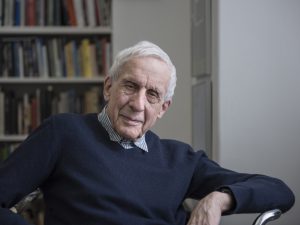
Kenneth Frampton Photo credit: Alex Fradkin
Deborah Willis and Kenneth Frampton are the recipients of the 2021 Distinguished Lifetime Achievement Award for Writing on Art.
Deborah Willis has opened the field of African American photography. When the invention of photography coincided with the promise of abolition, a new arc of aspiration was combined. Its new pictures, thought to be the work of light itself, began to transmit images so that, as Frederick Douglass said, “Men of all conditions may see themselves as others see them.” From the first, photographs and photographic studios proliferated inside the Black community. It is the true extent of this practice that has been revealed by the lifework of Deborah Willis. In effect she has acted as its archaeologist, sifting through the layers from the time of Louis Daguerre to the surface of our present, retrieving the images and researching their histories.
Kenneth Frampton, trained as an architect, is a prolific architectural historian and critic who has managed to face the behemoth of globalized capital with an enduring version of humane modernity. Frampton has been writing about architecture for over half a century. A model of the architect-scholar, Frampton not only opens new cosmopolitan perspectives on the work of widely influential architects from Le Corbusier and Louis Kahn to Zaha Hadid and Álvaro Siza Vieira with his scholarship but also gives due attention to transitional spaces and movements.
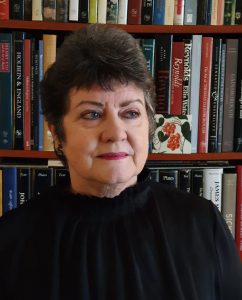
Gillian Malpass
Gillian Malpass is the recipient of a CAA Commendation for Service to Art Historical Scholarship. As publisher of art and architectural history at Yale University Press, London, Gillian Malpass assembled a matchless list of titles over three decades that set the press apart from all others. She fostered projects that were gorgeously designed, accessibly written, and beautifully illustrated, including numerous now-classic books by both emerging and senior scholars. She worked on monographs, exhibition catalogs, reference, and biography, from books examining previously unexplored fields to bestsellers. Authors of many of the most important books published in art history over the past thirty years attest in their prefaces to the ways in which Malpass’s encouragement, expertise, and eye shaped their work.
The Awards for Distinction will be presented during Convocation at the CAA Annual Conference on Wednesday, February 10 at 6:00 PM. This event is free and open to the public. A free and open registration is required.
The full list of 2021 CAA Awards for Distinction Recipients:

Sampada Aranke
Sampada Aranke, “Blackouts and Other Visual Escapes,” Art Journal, vol. 79, no. 4 (Winter 2020): 62–75

Katherine A. Bussard
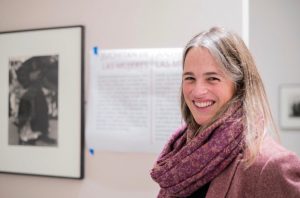
Kristen Gresh Photo credit: Oswaldo Ruiz
Katherine A. Bussard and Kristen Gresh, eds., “Life” Magazine and the Power of Photography, Princeton University Art Museum, 2020
and

Louis Marchesano
Louis Marchesano, ed., Käthe Kollwitz: Prints, Process, Politics, Getty Research Institute, 2020

Julieta Gonzalez

Tomás Toledo

Adriano Pedrosa

José Esparza Chong Cuy
Alfred H. Barr Jr. Award for Smaller Museums, Libraries, Collections, and Exhibitions
Adriano Pedrosa, José Esparza Chong Cuy, Julieta González, and Tomás Toledo, Lina Bo Bardi: Habitat, Museu de Arte de São Paulo Assis Chateaubriand (MASP) / DelMonico Books, 2020

Nicole R. Fleetwood Photo credit: Bayeté Ross Smith
Nicole R. Fleetwood, Marking Time: Art in the Age of Mass Incarceration, Harvard University Press, 2020

Charles L. Davis, II
Charles Rufus Morey Book Award
Charles L. Davis, II, Building Character: The Racial Politics of Modern Architectural Style, University of Pittsburgh Press, 2019
and

Nicole R. Fleetwood Photo credit: Bayeté Ross Smith
Nicole R. Fleetwood, Marking Time: Art in the Age of Mass Incarceration, Harvard University Press, 2020

Adam Jasienski
Adam Jasienski, “Converting Portraits: Repainting as Art Making in the Early Modern Hispanic World,” The Art Bulletin, vol. 102, no. 1 (March 2020): 7–30
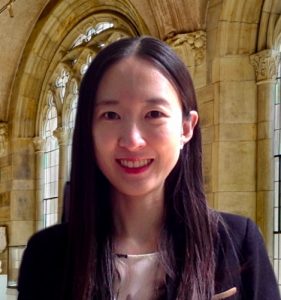
Jessie Park
Honorable Mention:
Jessie Park, “Made by Migrants: Southeast Asian Ivories for Local and Global Markets, ca. 1590–1640,” The Art Bulletin, vol. 102, no. 4 (December 2020): 66–89

Maren Hassinger Photo credit: Ava Hassinger
Artist Award for a Distinguished Body of Work
Maren Hassinger

Nancy Odegaard
CAA/AIC Award for Distinction in Scholarship and Conservation
Nancy Odegaard
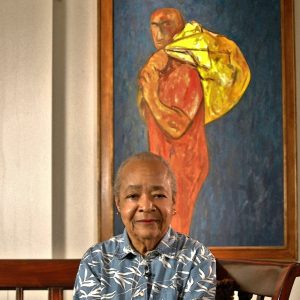
Samella Lewis
Distinguished Artist Award for Lifetime Achievement
Samella Lewis

Deb Willis
and
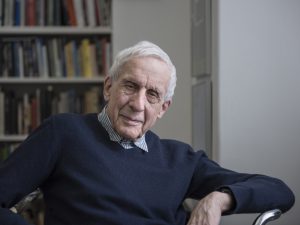
Kenneth Frampton Photo credit: Alex Fradkin
Distinguished Lifetime Achievement Award for Writing on Art
Deborah Willis and Kenneth Frampton
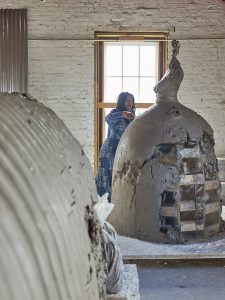
Simone Leigh Photo credit: Kyle Kodel
Distinguished Feminist Award—Artist
Simone Leigh

Katy Deepwell
Distinguished Feminist Award—Scholar
Katy Deepwell
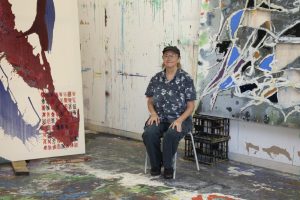
Dona Nelson
Distinguished Teaching of Art Award
Dona Nelson
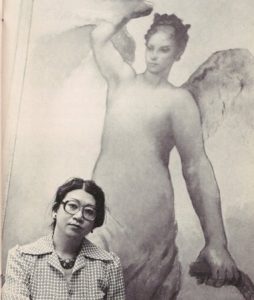
Kaori Kitao
Distinguished Teaching of Art History Award
Kaori Kitao
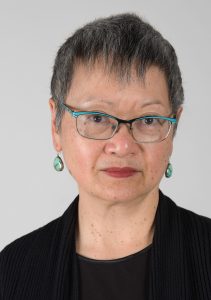
Margo Machida
Margo Machida

Gillian Malpass
CAA Commendation for Service to Art Historical Scholarship
Gillian Malpass
Learn about the juries that select the recipients of the CAA Awards for Distinction.
Mattie Schloetzer and Jason Vrooman: Remote and Virtual Internships
posted by Allison Walters — Feb 02, 2021
The CAA Conversations Podcast continues the vibrant discussions initiated at our Annual Conference. Listen in as educators explore arts and pedagogy, tackling everything from the day-to-day grind to the big, universal questions of the field.
CAA podcasts are on iTunes. Click here to subscribe.
In this week’s podcast, Mattie Schloetzer and Jason Vrooman come together to discuss trials and triumphs of remote and virtual museum internships during the COVID era.
Mattie Schloetzer is the administrator of internships and museum fellowships at the National Gallery of Art and a member of the CAA professional practices committee. She is co-chairing the session, “Best Practices and Lessons Learned from the Digital Shift to Prepare Students for Professional Success,” at the 2021 CAA Annual Conference, February 10–13.
Jason Vrooman is a curator and educator at the Middlebury College Museum of Art. He especially enjoys letting conversations with museum-goers of all ages inform acquisitions and talking about ethics and equity with the next generation of museum professionals.
Meet the Meiss Fund Recipients for Fall 2020
posted by Allison Walters — Jan 25, 2021
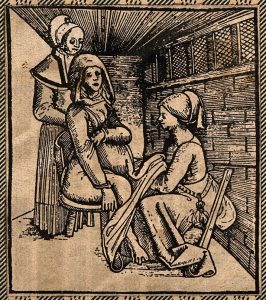
A woman seated on a obstetrical chair giving birth aided by a midwife who works beneath her skirts. Woodcut.
MEET THE GRANTEES
Twice a year, CAA awards grants through the Millard Meiss Publication Fund to support book-length scholarly manuscripts in the history of art, visual studies, and related subjects that have been accepted by a publisher on their merits, but cannot be published in the most desirable form without a subsidy.
Thanks to the generous bequest of the late Prof. Millard Meiss, CAA began awarding these publishing grants in 1975.
The Millard Meiss Publication Fund grantees for Fall 2020 are:
- Cammy Brothers, Giuliano da Sangallo and the Ruins of Rome, Princeton University Press
- Lindsay Caplan, Programmed Art: Freedom, Control, and Computation in 1960s Italy, University of Minnesota Press
- Margaret Graves and Alex Dika Seggerman, Making Modernity in the Islamic Mediterranean, Indiana University Press
- Diana Greenwald, Painting by Numbers: Data-Driven Histories of Nineteenth Century Art, Princeton University Press
- Subhashini Kaligotla, Shiva’s Waterfront Temples: Self and Space in Medieval India, Yale University Press
- Sigrid Lien, Colonial Legacies, Decolonial Activism: Indigenous Photographs Revisited, University of British Columbia Press
- Elizabeth Perrill, Burnished: Zulu Ceramics Between Rural and Urban South Africa , Indiana University Press
- Stephanie Sparling Williams, Speaking Out of Turn: Lorraine O’Grady and the Art of Language, University of California Press
- Rebecca Whiteley, Birth Figures: Early Modern Prints and the Pregnant Body, University of Chicago Press
Read a list of all recipients of the Millard Meiss Publication Fund from 1975 to the present. The list is alphabetized by author’s last name and includes book titles and publishers.
BACKGROUND
Books eligible for a Meiss grant must currently be under contract with a publisher and be on a subject in the arts or art history. The deadlines for the receipt of applications are March 15 and September 15 of each year. Please review the Application Guidelines and the Application Process, Schedule, and Checklist for complete instructions.
CONTACT
Questions? Please contact Cali Buckley, Grants and Special Programs Manager, at cbuckley@collegeart.org.
International News: The Van Abbemuseum in the Netherlands Explores the Legacies of Colonialism in a Solo Exhibition by Victor Sonna
posted by Allison Walters — Jan 08, 2021
The following article was written in response to a call for submissions by CAA’s International Committee. It is by Ilaria Jessie Obata, an art historian and curator currently completing an MA in Curating Art and Cultures at the University of Amsterdam.
Victor Sonna’s first solo exhibition, 1525, which opened at the Van Abbemuseum in Eindhoven in July 2020, tells a multilayered story of personal introspection and shared colonial legacies. This collaboration between the artist and the museum is among the most recent exhibitions that fall under the mission scope of Musea Bekennen Kleur (Museums Confess Color), a contemporary platform established in Amsterdam in March 2020, in which “museums take accountability and responsibility through ongoing conversations about achieving diverse and inclusive institutional settings” (Musea Bekennen Kleur, https://museabekennenkleur.nl/).
The Van Abbemuseum, a participant in this project, is also one of the first museums in the Netherlands to embark upon a steady process of decolonizing its exhibitions and collections. This institutional decision was further marked by the Van Abbemuseum’s 2007 exhibition, Be(com)ing Dutch, in which participating artists Anette Kraus and Petra Bauer criticized racialized images of Zwarte Piet (Black Pete), which perpetuate the use of black face for the Sinterklass holiday (Saint Nicholas). The museum encountered severe backlash from the far-right party in the Netherlands for its criticism of the Dutch holiday, which further exposed this contested discussion within the country as whole. This response exemplified the need to continue the process of decolonizing cultural and educational platforms that perpetuate racial stereotyping. Therefore, Sonna’s solo exhibition builds upon the museum’s desire for institutional accountability regarding the Netherland’s recent past and its involvement with the trans-Atlantic slave trade. Sonna and the Van Abbemuseum decided to organize an exhibition with a dynamic narrative that would prompt discussion about contemporary colonial legacies. Working together, Sonna, Van Abbe director Charles Esche, curator Steven ten Thije, and guest curator Hannah Vollam, designed and curated an exhibition that presented Sonna’s research from multiple perspectives.
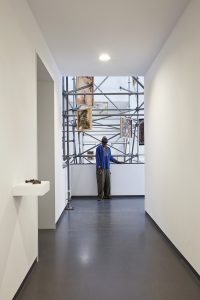
Figure 1. Victor Sonna in his 1525 exhibition at the Van Abbemuseum, 2020. Photo: Ronald Smits
Born in 1977, Victor Sonna is a visual artist who moved to the Netherlands at age nineteen from Yaoundé, Cameroon. Having studied at the Design Academy in Eindhoven and then at the AKV | St. Joost in Den Bosch, Sonna is based in Eindhoven and works in various mediums. His Van Abbemuseum exhibition includes three installations of tapestries, prints, and audio-visual material. The exhibition narrative started with his purchase of a pair of chains that once belonged to an enslaved person in New Orleans. The number 152 was engraved on these chains and thus remains the focal point for the exhibition title, 1525 (Fig. 1). Sonna’s installations regularly refer to the commoditization of human life under slavery, or rather “…the treatment of persons as property or, in some kindred definitions, as objects… when the individual is stripped of his previous social identity and becomes a non-person, indeed an object and an actual or potential commodity” (Igor Kopytoff, “The Cultural Biography of Things: Commoditization as Process,” in The Social Life of Things: Commodities in Cultural Perspective, p. 65). Sonna’s purchase led to his own research on the socio-historical impact of colonial exploitation, which constructed and perpetuated the commodification of human life for Western imperial profit.
His audio-visual works, which contextualize and document the slave trade in Ghana, are shown in six separate film installations in the exhibition. Sonna visually captured the external and internal space of Fort Elmina, a former slave trading post that was seized and consolidated by the Dutch in 1637. He documents remembrances of the trans-Atlantic slave trade, which have remained imprinted upon the walls of the fort and linger within the smell of the dungeons. The fort “plays a central role within the exhibition since the title,1525, also corresponds to the year marking the departure of the first slave ships from the West African coast to the Caribbean islands”(Harmen van Dijk, TrouwNL, 18 July 2020, translated from Dutch by the author). Sonna used this historical research to better understand the dehumanizing effects of the trans-Atlantic slave trade that turned enslaved African individuals into commodities, and led to a specific form of merchandising the colonial: distinguishing people as objects and as lesser than human.
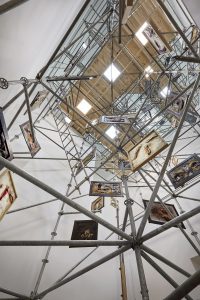
Figure 2. Victor Sonna, Tower of Babel, 2020, Van Abbemuseum. Photo: Ronald Smits
The accompanying installations showcase Sonna’s training as a visual artist as he meshes together the mediums of sculpture, metalwork and tapestry through the jaw-dropping 82-foot-high steam beam tower, from which his framed tapestries hang within the inner spire of the museum. This massive installation, titled the Tower of Babel (Fig. 2), contains the 152 tapestries that require multi-angled viewings because both sides of the frames are packed with layers of overlapping materials, from glued cane sugar to metallic nails and coins. Sonna gathered 152 European Gobelins tapestries, made between the eighteenth and twentieth century, which comprise his series Bleach and Dust, Sugar and Rubber and Maps. However, Sonna wanted to deconstruct the singular perception of these tapestries as representing “the history and prosperity of Europe” (Harmen van Dijk, TrouwNL, 18 July 2020, translated from Dutch by the author), by exposing the forms of exploitative slave labor used to extract materials such as sugar and rubber, which are imbedded and glued onto the surface of the tapestry. On Sonna’s website he states that this series approaches the “layering and displaying of connected histories that have been etched, trapped and layered in the earth” (Victor Sonna, http://victorsonna.com/site/news.php ).
Sonna presses different sculptural materials into the tapestries, creating multiple reliefs on their surfaces (Figs. 3,4,5). He “traps” metallic objects: coins, metal chains, and nails along with Kente cloth from Ghana that has been rolled up and sewn into the tapestries, and granulated cane sugar glued around the edges. He purposefully imbeds these materials into the textural DNA of the tapestry and locks each object inside it. The reliefs pushing out of the tapestry juxtapose the Gobelins framed surface with the visual effects of these contrasting materials, making us look again. The materiality of such commodities is weighed down by the history of their production, one fueled by the violence and death that characterizes the slave trade and its plantations. The artist’s desire to etch and trap together seemingly disparate materials creates a correlation between a shared European history of colonial exploitation and the creation of racial difference.

Figures 3, 4, 5. Victor Sonna, 2020, Van Abbemuseum. Photo: Ronald Smits
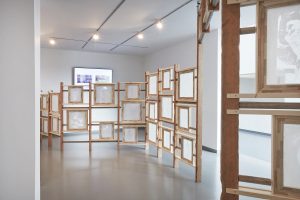
Figure 6. Victor Sonna, Wall of Reconciliation, 2020, Van Abbemuseum. Photo: Ronald Smits
Lastly, a striking section of this exhibition required two visitors to stand in front of one another, separated by a series of fifty-two silkscreen frames titled the Wall of Reconciliation (Fig. 6). The term “reconciliation” connotes Sonna’s desire to ensure that the printed image reconciled two opposing views. Every silkscreen required a dark backdrop in order to see the printed image; it is only visible if two visitors are standing on opposites sides of the same screen. Thus, the two viewers on opposite sides see the same explicit images of violence that are part of a series of drawings depicting slavery in Suriname, a Dutch colony that gained independence only in 1975. In Figure 7, the image depicts a young boy holding a rake, signifying the effects of enforced labor during the formative years of a child’s life and how it can mold a perception of the self that is intrinsically tied to an object of labor. Henceforth, each of these installations emphasized Sonna’s desire to deconstruct a biased and unilateral frame of reference.
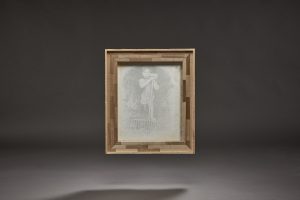
Figure 7. Victor Sonna, Wall of Reconciliation, 2020, Van Abbemuseum. Photo: Ronald Smits
1525, which has received acclaimed reviews in the Dutch press, is on display at the Van Abbemuseum until May 2021. Writers have collectively applauded the museum’s commitment to showcasing this stirring and historically fueled narrative. The Van Abbemuseum will continue to produce related public programming that is both accessible and reflective of its mission to highlight the legacies of Western colonialism in a Northern European context.
In Memoriam: Robert L. Herbert
posted by Allison Walters — Dec 22, 2020
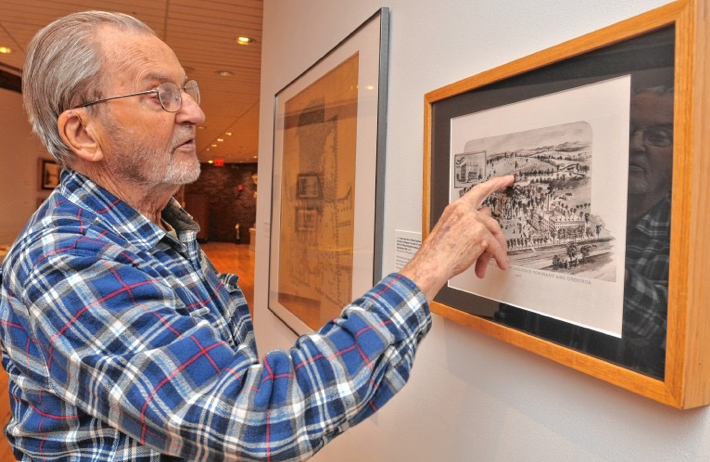
Robert L. Herbert
We are saddened to learn of the passing of Robert L. Herbert, a visionary in art history and extraordinary teacher to many. He received CAA’s Distinguished Lifetime Achievement Award for Writing on Art in 2008. He passed December 17 of a stroke at 91.
Robert L. Herbert
In an extraordinary career spanning more than sixty years, Robert L. Herbert was remarkably consistent in a practice that has come to define the social history of art, which he described as “the moral and passionate … search for what paintings and drawings meant in the artists’ time.”1
As an undergraduate at Wesleyan University in the late 1940s and early 1950s, he was fascinated by the history of science, an interest that encouraged his study of color theory in his dissertation on the nineteenth-century French artist Georges Seurat, completed at Yale University under the direction of George Heard Hamilton in 1957. By that time, Herbert had already been inspired by the work of Meyer Schapiro, who encouraged his lifelong commitment to socialism as a framework for political and intellectual development. Proud of his roots in a working-class New England family, Herbert resisted the formalist bias of his training, although he readily acknowledges a debt to those who taught him to look carefully at works of art and to appreciate the importance of technique and pictorial structure. From the beginning he always insisted that “the stuff of ordinary daily life should enter into art history,” and made it his goal “to restore the flesh of real painters and their culture to the bones of style and form.”
A desire to balance respect for the artist’s distinctive modes of representation with a socially and historically grounded reading of subject matter was a salient feature of Herbert’s research, which focused, for example, not only on the color and facture of paintings by Seurat and other Neoimpressionist artists, but also on the distinctive subject matter and the politics of their art. Recognizing that the prevailing view of Seurat tended to privilege his large-scale paintings, Herbert trained attention on his drawings in a book published in 1963; yet he also continued to explore the meanings of Seurat’s paintings, organizing a major retrospective exhibition on the hundredth anniversary of the artist’s death in 1991 as well as another, Seurat and the Making of “La Grande Jatte,” that was devoted to his most celebrated painting in 2004. In fact, many of Herbert’s most innovative and important contributions to the history of art have been made in the context of exhibitions, which require careful attention to individual objects in addition to the presentation of a unifying conception of the whole. For his first foray into this genre of scholarship, the 1962 exhibition Barbizon Revisited, Herbert wrote a catalogue that won CAA’s Frank Jewett Mather Award and precipitated a renewed appreciation of the work and historical significance of mid-nineteenth-century landscape painters such as Corot, Millet, and Rousseau, among others. His ambition for the exhibition was expressed in terms that convey his dedication to a particular kind of art-historical practice: “The purely historical treatment of art is bloodless. The real heritage of Barbizon art is in the paintings, and their vitality must be experienced in our viscera. Otherwise works of art are documents to be assessed, catalogued, and filed away. But there is a proper use of history, namely, to prod us into discoveries which release our imagination and permit us to rise to the realm of true poesis. An historical evaluation of Barbizon art will only have value if it succeeds in doing just this.”
Just as the study of Seurat’s drawings prompted Herbert to look carefully at Millet’s drawings and other work in articles and exhibitions of the 1960s and 1970s, so Seurat’s paintings eventually led him to the work of Fernand Léger, whom he considers to be Seurat’s descendant and a great practitioner of the craft of painting. Thus although Herbert’s scholarly reputation is bound to his work on nineteenth-century French painters—he has written books on Monet and Renoir, a survey devoted to the leisure subjects of the Impressionists, as well as the publications mentioned above on Seurat, Millet, and the Barbizon School—he has also produced significant scholarship on early-twentieth-century modernism. His first contribution to that field was an edited volume of ten essays, Modern Artists on Art, published in 1964. This was followed twenty years later by a detailed study of the large, diverse collection of European and American modernist art from the Société Anonyme that Katherine Dreier had bequeathed to Yale at midcentury and that Herbert had explored for many years together with his students. Along the way, Herbert developed research he had undertaken as a graduate student into a book, published in 1972, on David’s Brutus and its political significance in the context of the French Revolution; his commitment to the social history of art was also evident in a volume of selected art criticism by John Ruskin that Herbert edited in 1964 and for which he wrote an eloquent introduction that provided a thoroughgoing reevaluation of Ruskin’s significance from a variety of perspectives, demonstrating his acute relevance to the social history of art that Herbert was in the process of articulating at the time.
It is impossible to summarize Herbert’s contributions to art history simply in terms of his scholarly production, impressive as that output has been. He has also been an inspiring teacher of undergraduate and graduate students, setting an example in countless ways that go well beyond his commitment to scrutinizing original works of art alongside archival resources of the most diverse kinds. In addition to imparting these indispensable staples of the trade, he maintained an extraordinary level of personal and professional engagement with his students, loyally supporting their ambitions and celebrating their achievements, whether large or small. Refusing to be impressed by conventional measures of status, in 1990 he acted on his commitment to feminism by relinquishing his position at Yale in order to join his wife, Eugenia Herbert—whom he has always described as his greatest intellectual companion—on the faculty of Mount Holyoke College.
As professor emeritus and living in South Hadley, Massachusetts, he discovered a passionate interest in the life and work of a mid-nineteenth-century female botanist and illustrator named Orra White Hitchcock. “I’ve taken the plunge,” Herbert has remarked, “into the world of American women’s diaries, into travel diaries, and into the history of geology and the natural sciences, embraced in the broader spectrum of American social and cultural history of the middle third of the nineteenth century. It’s a new world for me, and I have no regrets at giving up French art history!” Subsequently he turned to exploring the history of Mount Holyoke and curated several exhibitions with James Gehrt and Aaron Miller.
He died December 17 of a stroke at 91 and is survived by his wife of 67 years Eugenia (Fi); children, Tim, Rosie, and Cathy; their mates, Mara, John and Chris; six grandchildren, and a wealth of friends to whom he was immensely devoted as well.
Finalists for the 2021 Morey and Barr Awards
posted by Allison Walters — Dec 16, 2020
CAA is pleased to announce the 2021 finalists for the Charles Rufus Morey Book Award and two Alfred H. Barr Jr. Awards. The winners of the three prizes, along with the recipients of other Awards for Distinction, will be announced in February 2021 and presented during Convocation in conjunction with CAA’s 109th Annual Conference, taking place on February 10-13, 2021.
2021 Charles Rufus Morey Book Award finalists
2021 Alfred H. Barr Jr. Award finalists
Louis Marchesano, ed., Käthe Kollwitz: Prints, Process, Politics, Getty Publications, 2020
2021 Alfred H. Barr Jr. Award for Smaller Museums, Libraries, Collections, and Exhibitions finalists
Andrea Rosen, Wood Gaylor and American Modernism, 1913-1936, Fleming Museum of Art, 2020
Jinah Kim and Todd Lewis, Dharma and Puṇya: Buddhist Ritual Art of Nepal, Brill, 2019
CWA Picks for October 2020
posted by CAA — Oct 15, 2020
October Picks from the Committee on Women in the Arts celebrate the return of major international museum surveys dedicated to the creativity and power of women artists throughout the centuries, drawing attention to the seventeenth-century Italian Baroque master Artemisia Gentileschi, Venezuela’s twentieth-century Concrete sculptor Gego, and the women of Surrealism. As always, our global highlights are informed by shows and events that explore social justice issues and intersectional feminism.
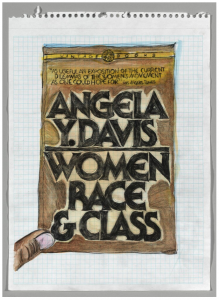
Cauleen Smith, Human_3.0 Reading List: Angela Davis. Women, Race, and Class, 2015 Graphite and acrylic on paper
One Million Roses for Angela Davis
October 10, 2020–January 24, 2021
Kunsthalle im Lipsiusbau, Dresden
Celebrating the singular life of Black activist and feminist Angela Davis, One Million Roses takes a closer look at Davis’s complex cultural relationship with East Germany almost fifty years after the launch of the postcard campaign, “A million roses for Angela,” in 1970-72, when she was held in prison under terrorism charges. This exhibition builds upon the formative commitment to Davis’s revolutionary aims, ideologies, and actions that was supported by the GDR, where she was welcomed as a state guest after release. On display are works by contemporary international artists who acknowledge and promote Davis’s calls for hope and non-racist democracy.
Until January 24, 2021
The National Gallery, London
A major retrospective dedicated to the Baroque master Artemisia Gentileschi, following the artist’s career from Rome to Florence, Venice, Naples, and London; includes the artist’s recently discovered personal letters, and promotes virtual events unearthing Gentileschi’s dramatic life and tremendous production.
October 9, 2020–March 21, 2021
Guggenheim Museum, New York
The first major retrospective survey in New York dedicated to the career of Venezuelan artist Gertrud Goldschmidt, known as Gego (b. 1912, Hamburg, Germany), a pioneer of postwar geometric abstraction and kinetic art, whose early career as an architect and engineer galvanized new spatial modalities in sculpture, textile, print and drawing.
Real and Imagined: Fabric Works and Video Animations by Heidi Kumao
September 15, 2020–December 4, 2020
Stamps Schools of Art & Design, Ann Arbor, MI
Heidi Kumao’s narrative fabric works and experimental animations are on view in this singular exhibition that explores the pervasive dynamics of sexual power, trauma, and incident. The title, “Real and Imagined,” underscores the contradictions of women’s voices in the public realm, inspired by testimonials and experiences from the #MeToo movement, when ‘truth’ and ‘memory’ are inevitably questioned or dismissed. Kumao’s industrial felt works utilize interesting references to simple quotidian objects—chairs, roots, ladders—allowing narrative to unfold in subtle ways as the images and stories are constructed and abstractly revealed on the heavy felt surfaces.
Curator Sabine Folie
September 30, 2020–January 10, 2021
LENTOS Kunstmuseum Linz
To honor Valie Export’s 80th birthday, LENTOS has organized an exhibition dedicated to the “history of the body,” a theme broadly negotiated throughout the artist’s early career and further explored in the context of the technological and digital age. On view are early works from the 1970s and contemporary projects, including performative actions, conceptual photographs, and “re-enactments” of Old Masters.
July 25–November 8, 2020
Louisiana Museum of Modern Art, Humlebaek, in cooperation with Schirn Kunsthalle, Frankfurt
This presentation explores the contributions and positions of 34 women artists from Europe, the US, and Mexico who were identified with the art historical movement of Surrealism or connected to surrealistic activities beyond the status of muse or model. Fantastic Women features well-known figures, such as Louise Bourgeois, Frida Kahlo, Leonora Carrington, and Meret Oppenheim, among other pivotal figures, such as Kay Sage, Leonor Fini and Toyen.
What Are You Voting For? A Virtual Exhibition
October 9–31, 2020
Woman Made Art Gallery, Chicago, IL
Jurors: Karen Gutfreund + Sherri Cornett | Gutfreund Cornett Art
In response to the November 2020 US elections, Woman Made Gallery (WMG) has organized a virtual exhibition of 37 “self-identified” women artists whose artworks address pressing topics about race, intersectionality, politics, privilege, health care, as well as other groundbreaking subjects. Exhibiting artists include: Beth Costello, Alicia Decker, Jacqueline DesForges, Karen Fiorito, Lisa Freeman, Christine Giancola, Linda Gleitz, Leah Golberstein, Jae Green, Susan Hale, LucyJulia Hale, Edwina Jaques, Tulika Ladsariya, Beth Lakamp, Holly Ballard Martz, Sandy Mayo, Penny McElroy, Cristin Millett, Cherie M Redlinger, Sawyer Rose, Caren Helene Rudman, Gigi Salij, Sarah Schneiderman, Suzannah Schreckhise, Durba Sen, Sarah Sipling, Pauline Hudel Smith, Laurie Szujewska, Salma Taman, Millette Tapiador, Amy Usdin, Winnie van der Rijn, Mary Vaneecke, Michelle Victoria, Dominique Vitali, Kelsey Merreck Wagner, Maria Wolf.
Announcing the Appointment of Three New Editors for CAA Publications
posted by CAA — Oct 01, 2020
We’re pleased to announce the appointment of three new editors for CAA publications: editor designate Eddie Chambers, who will take up his post as Editor-in-Chief of Art Journal, July 2021 – June 2024; Julie Nelson Davis, current Editor-in-Chief of caa.reviews, July 2020 – June 2023; and editor designate Stephanie Porras, who will take up her post as Reviews Editor of The Art Bulletin, July 2021 – June 2024. Learn more about their work below.
EDITOR BIOGRAPHIES
Eddie Chambers | Incoming Editor-in-Chief of Art Journal, July 2021 – June 2024
 Eddie Chambers was born in Wolverhampton, England. He gained his PhD from Goldsmiths College, University of London in 1998, for his study of press and other responses to the work of a new generation of Black artists in Britain, active during the 1980s. He joined the Department of Art and Art History at the University of Texas at Austin in January 2010 where he is now a Professor. His books include Things Done Change: The Cultural Politics of Recent Black Artists in Britain (Rodopi Editions, Amsterdam and New York, 2012), Black Artists in British Art: A History Since the 1950s, (I. B. Tauris, London and New York, 2014, reissued 2015), and Roots & Culture: Cultural Politics in the Making of Black Britain, published 2017 (I. B. Tauris/Bloomsbury). He is the editor of the recently-published Routledge Companion to African American Art History. His forthcoming book is World is Africa: Writings on Diaspora Art (Bloomsbury, 2021).
Eddie Chambers was born in Wolverhampton, England. He gained his PhD from Goldsmiths College, University of London in 1998, for his study of press and other responses to the work of a new generation of Black artists in Britain, active during the 1980s. He joined the Department of Art and Art History at the University of Texas at Austin in January 2010 where he is now a Professor. His books include Things Done Change: The Cultural Politics of Recent Black Artists in Britain (Rodopi Editions, Amsterdam and New York, 2012), Black Artists in British Art: A History Since the 1950s, (I. B. Tauris, London and New York, 2014, reissued 2015), and Roots & Culture: Cultural Politics in the Making of Black Britain, published 2017 (I. B. Tauris/Bloomsbury). He is the editor of the recently-published Routledge Companion to African American Art History. His forthcoming book is World is Africa: Writings on Diaspora Art (Bloomsbury, 2021).
Julie Nelson Davis | Current Editor-in-Chief of caa.reviews, July 2020 – June 2023

Julie Nelson Davis is Professor of the History of Modern Asian Art at the University of Pennsylvania. Recognized as one of the world’s foremost authorities on Japanese prints and illustrated books, Davis teaches a wide range of courses on East Asian art and material culture in the greater global context. After receiving her BA from Reed College, Davis completed her MA and PhD from the University of Washington and studied at Gakushūin University in Tokyo. She is author of Utamaro and the Spectacle of Beauty (Reaktion Books, 2007 and 2021), Partners in Print: Artistic Collaboration and the Ukiyo-e Market (University of Hawai’i Press, 2015), and Picturing the Floating World: Ukiyo-e in Context (in press). Davis was recently a guest curator for the Freer and Sackler Galleries for an exhibition on Utamaro (2017) and is preparing an exhibition of Japanese illustrated books at the University of Pennsylvania. She is currently working on a new project on issues of imitation, homage, and fakery in early modern Japanese art and their legacies into the present. In addition to her tenure as caa.reviews Editor-in-Chief from 2020 to 2023, Davis served as the field editor for Japanese art from 2001 to 2010 and a board member from 2007 to 2011.
Stephanie Porras | Incoming Reviews Editor of The Art Bulletin, July 2021 – June 2024
 Stephanie Porras is Associate professor of Art History in the Newcomb Art Department at Tulane University, specializing in early modern art made in Northern Europe and across the Spanish world. Author of Pieter Bruegel’s Historical Imagination (Pennsylvania State University Press, 2016) and Northern Renaissance Art: Courts, Commerce, Devotion (Laurence King, 2018), Porras has also published widely on topics ranging from Albrecht Dürer’s drawings to Hispano-Philippine ivories. Her current book project, The First Viral Images considers the mobility of early modern artworks and their role in processes of globalization, and has been supported by fellowships at the New York Public Library, the Sterling and Francine Clark Art Institute, and the Center for Advanced Study in the Visual Arts at the National Gallery of Art.
Stephanie Porras is Associate professor of Art History in the Newcomb Art Department at Tulane University, specializing in early modern art made in Northern Europe and across the Spanish world. Author of Pieter Bruegel’s Historical Imagination (Pennsylvania State University Press, 2016) and Northern Renaissance Art: Courts, Commerce, Devotion (Laurence King, 2018), Porras has also published widely on topics ranging from Albrecht Dürer’s drawings to Hispano-Philippine ivories. Her current book project, The First Viral Images considers the mobility of early modern artworks and their role in processes of globalization, and has been supported by fellowships at the New York Public Library, the Sterling and Francine Clark Art Institute, and the Center for Advanced Study in the Visual Arts at the National Gallery of Art.


